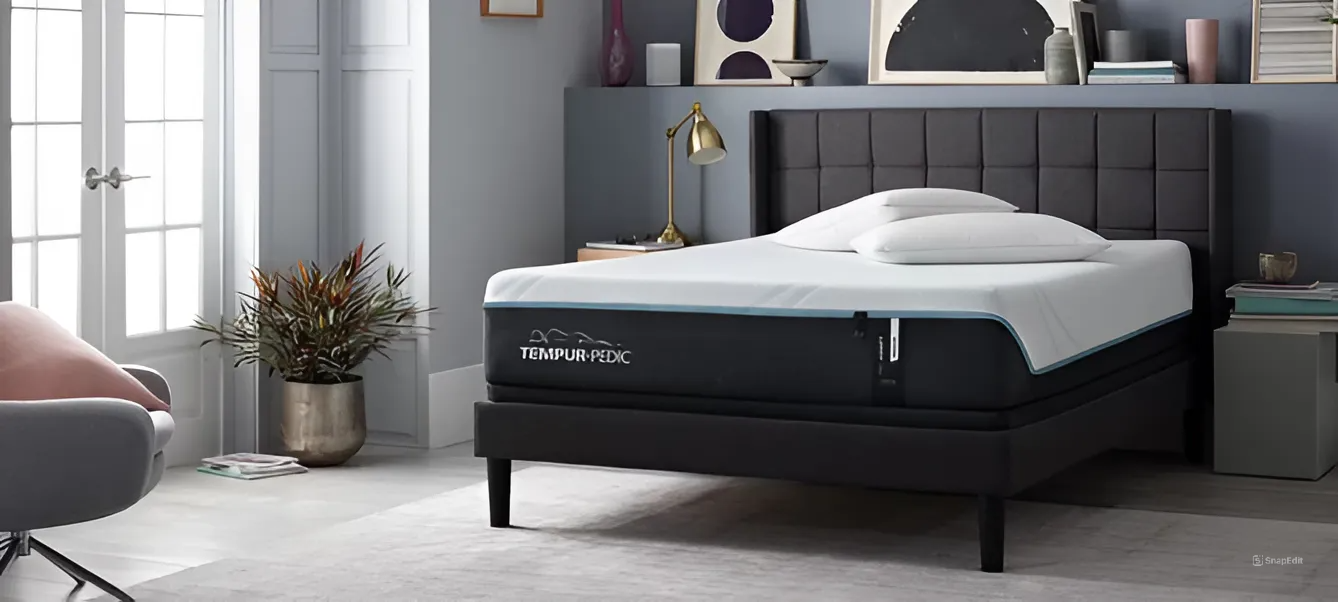
The Complete Guide to Buying a New Mattress Online (Part 1)
Given that you spend more than a third of your life in bed, you want to come home every day to a comfy place to lie on and receive a good night’s rest. But looking to buy a new mattress can be a confusing and frustrating process. Selecting a suitable mattress based on material composition, price, and other factors involves undertaking extensive research on each of these facets. This can be extremely daunting, given the wide spectrum of mattress brands and retailers available both online and in brick-and-mortar stores.
While it is a little tougher to shop online for a right mattress, there are many advantages in doing so.
Apart from being cheaper and much more convenient, most online merchants allow you to test out a mattress for a period of time after purchasing. On the off chance that you are not completely satisfied, you are given the option of returning the mattress for a full refund. That way, there is less risk associated with making the purchase and also less pressure on you to buy.
So, if you are open to buying a mattress via an online retailer but not sure where to begin your search, this guide will walk you through the process of ordering a bed online.
We will show you what to look for, how to choose the right mattress product, beds and basics, and navigate the online shopping experience to ensure that you are fully informed of everything you need to know about finding your ideal mattress type before you make your final purchase.
Keep reading to learn how to buy a mattress online and feel free to revisit this guide anytime you need to refresh your memory when making a purchase.
How firm should your mattress be?
Because comfort is often subjective, it is crucial to find the mattress that feels right for you.
Firmness describes how soft or hard a mattress feels. Some people prefer a softer mattress they can sink right into, while others prefer a firmer mattress for additional back support. Depending on how you sleep, some parts of your body require additional support to keep the spine well-aligned with the entire form.
Ideally, you want a mattress that is firm enough to elevate and hold up your lumbar spine, but also soft enough to curve against the top of your thoracic spine and pelvis. This is fundamental to maintain comfort and helps avoid aches and pains when you lie down.

Firmness scale rating
- Mattress firmness is assigned using a 1 to 10 scale, with 1 being extra soft and 10 being extra firm.
- Mattresses are rarely available at both ends of this scale, as most people tend to favour a mattress that falls between 3 (or ‘soft’) to 8 (or ‘extra firm) on the firmness scale.
- A mattress of medium firmness generally provides a healthy balance of comfort and support to give you a good night’s sleep, but where you sit on this scale comes down to your personal preferences.
- Extra soft (1-2)
An extra soft mattress registers between 1 and 2 on the mattress firmness scale. This makes them the least firm out of all mattresses hence hardly any mattresses are listed as a 1 on the firmness scale.
These mattresses provide the least amount of support among all the levels of mattress firmness since the sleep surface will sink very deeply and conform closely.
Sleeping on a mattress like that is only going to hurt your spine, but is likely to be extremely uncomfortable as well.
- Soft (3-4)
Soft mattresses generally sink somewhere between 1.5 to 3 inches when slept on. These mattresses offer a good amount of body contouring. This means that when you lie on them, they mould perfectly to your body shape and hug it.
Softer mattresses provide much-needed comfort for those who sleep on their sides and suffer from shoulder or hip pain when sleeping on a firmer mattress.
They are, however, not as conducive for back and stomach sleepers.
- Medium (5-6)
Medium-balanced beds are perhaps the most popular firmness option on the market.
They are best suited for people who require a softer mattress surface to aid in pressure-point relief but who also need more central support compared to what a regular soft mattress can offer.
Depending on your personal preferences, you can either go for the average 6 or something even softer in the area of 5 out of 10 on the mattress firmness rating.
But do note that these mattresses are not ideal for people who require a lot of back support when they sleep.
- Firm (7-8)
Mattresses ranging from slightly to more firm do not provide as much curvature and sinkage as mattresses of medium firmness.
These mattresses fall between 7 and 8 on the mattress firmness scale, giving a nice level of contour while providing an ample amount of back support.
Unlike a softer mattress, medium firm mattresses will usually have a noticeable amount of bounce. They work well for a wide range of body types and sleep positions from heavier sleepers to combination sleepers who frequently switch positions throughout the night.
- Extra firm (9-10)
Falling between 9 to 10 range on the mattress firmness scale, extra firm mattresses provide the most support out of all of the available mattress options. But much like extra soft mattresses, not many mattresses have a 10 in firmness.
The top layers and inner composition of an extra firm mattress is designed to keep your body afloat the mattress instead of sinking into it.
While some people find an extra firm mattress pleasant to sleep on, those who require more cushion might find them too solid for their comfort.
Ideal mattress firmness for your sleeping position
If you are unsure what firmness level is right for you, consider your weight and sleeping position to narrow down what works best.
Most people tend to adopt one of the three main categories for sleeping styles. These are the side, stomach or back sleepers. There are also those who alternate between the three positions, making them the combination sleeper.
Knowing your favourite sleeping posture can bring you another step closer to identifying your ideal mattress. This would be the position that helps you fall asleep and the position you find yourself waking up to. Once you have identified your preferred sleeping position, you will have a better grasp of the ideal firmness scale and level that caters to your sleep style.
- Side sleepers
With side sleepers, the impact of your weight is mainly concentrated on the broader parts of the body such as the shoulders and hips. Look for a mattress in the range of 3 to 6 for something that can provide ample support for your sides and offers a degree of sinkage for your shoulders and hips.
A mattress of this firmness also allows your spine to be positioned parallel to the ground in order to prevent excess vertical contortion in that area since this could potentially trigger your pressure points and affect your sleep quality.
A medium soft to medium firm mattress thus seeks to alleviate the pressure from these sharp points, as it provides support and contouring for your body’s curvature when you lie on your side.
- Stomach sleepers
Sleeping on your stomach is sometimes considered the worst sleeping position as a lot of pressure is exerted on your lumbar spine.
In this case, a mattress in the 5 to 7 or firm to medium firm range is recommended to provide equal weight distribution across your entire body, preventing the torso from contorting into an uncomfortable U-shape. It is crucial to keep your back in a neutral position when you lie on your stomach. This is to alleviate any potential pain in that area by keeping the spine aligned through proper contouring and ample support for your upper body.
- Back sleepers
The uncomfortable U-shaped bend is also prevalent among back sleepers. If your mattress is too soft, your body will sink and cause you back pain.
A firm to medium firm mattress between 5 to 7 will help to distribute your weight fairly equally throughout the mattress instead of allowing excessive pressure to concentrate on a particular body part. When you are lying down on your back, the mattress should lift and set the spine in a neutral alignment. This level of firmness is thus soft enough to provide adequate contouring to the spine while maintaining the requisite support for your spine, lower back and neck.
- Combination sleepers
If you find yourself sleeping in multiple positions, then you are probably a combination sleeper.
Combination sleepers are known to switch between positions throughout the night, rolling over from their back to their stomach to their side and so on and so forth. This constant movement can make selecting a suitable mattress trickier due to your changing needs each time you change your sleeping position. In this situation, you want a mattress that can suit all of your needs well. Something of medium to medium firmness is expected to provide you with the most support while you sleep as it adjusts itself according to how you sleep.
While a mattress that is around 5 to 8 on the firmness scale is generally the best option for this category of sleeper, you also want to factor in your weight and comfort preferences when deciding what mattress firmness is ideal for you.

